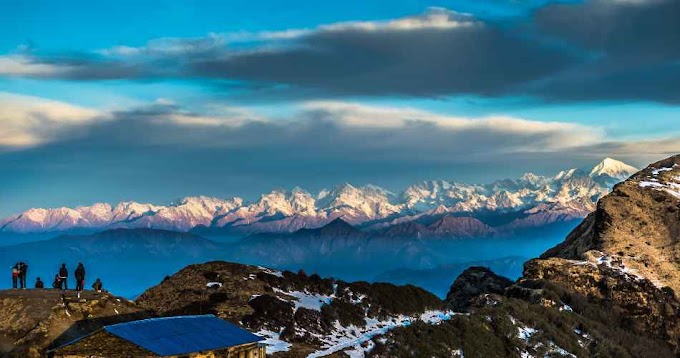
Nepal is a small Himalayan country located in South Asia, known for its majestic mountains, diverse culture, and rich history. Nepal Before Unification under one ruler, it was divided into several small kingdoms and principalities. In this article, we will explore what was the condition of Nepal before unification and delve into the fascinating history and culture of this beautiful country.
The Kingdoms of Nepal Before Unification
Before the unification process began, Nepal was divided into several small kingdoms and principalities. The major kingdoms were Kathmandu, Patan, and Bhaktapur, collectively known as the Kathmandu Valley kingdoms. Other important kingdoms were Gorkha, Lamjung, Mustang, and Palpa.
a) The Kathmandu Valley Kingdoms
The Kathmandu Valley kingdoms were the most important kingdoms in Nepal before unification. They were ruled by the Malla dynasty and were renowned for their art, architecture, and culture. The kingdoms were in constant competition with each other, leading to frequent conflicts and wars. The Kathmandu Valley was a center of trade and commerce and was known for its skilled artisans and craftsmen.
b) The Gorkha Kingdom
The Gorkha Kingdom, located in western Nepal, was ruled by the Shah dynasty. The kingdom was founded by King Drabya Shah in 1559 and was known for its military strength and strategic location. The Gorkha Kingdom was a small but powerful kingdom that played a crucial role in the unification of Nepal.
c) The Lamjung Kingdom
Lamjung Kingdom, located in central Nepal, was ruled by the Khas dynasty. The kingdom was founded by King Bhupal Shah in the early 16th century and was known for its agriculture and trade. The Lamjung Kingdom was a small but prosperous kingdom that played a significant role in the history of Nepal.
d) The Mustang and Palpa Kingdoms
The Mustang and Palpa kingdoms were located in the northern and southern regions of Nepal, respectively. These kingdoms were relatively small and were known for their strategic locations and natural resources. The Mustang Kingdom was located on the ancient trade route between Tibet and India and was a center of trade and commerce. The Palpa Kingdom was known for its skilled craftsmen and artisans and was a center of art and culture.
The Unification of Nepal
The unification process began in the mid-18th century when King Prithvi Narayan Shah of Gorkha launched a campaign to unify all the small kingdoms and principalities into one country. He was successful in his campaign, and Nepal was unified under one ruler for the first time in 1768.
a) The Role of King Prithvi Narayan Shah
King Prithvi Narayan Shah played a crucial role in the unification of Nepal. He was a visionary leader who understood the importance of unity and strength in a small country like Nepal. He was successful in defeating the Kathmandu Valley kingdoms and other small principalities, and he established a strong central government in Nepal. King Prithvi Narayan Shah is considered one of the most important figures in the history of Nepal.
b) The Impact of Unification
The unification of Nepal had a profound impact on the country's history and culture. It brought an end to the constant conflicts and wars between the small kingdoms and principalities, and it established Nepal as a unified country with a strong central government. The unification process also led to the development of a common language, culture, and identity among the Nepali people. The unification of Nepal also opened up new opportunities for trade and commerce, leading to the growth of the economy and the development of new industries.
The Rich Culture and History of Nepal
Nepal has a rich culture and history that dates back thousands of years. The country is known for its vibrant festivals, intricate art and architecture, and diverse ethnic groups.
a) Festivals of Nepal
Nepal is known for its vibrant festivals, which are celebrated throughout the year. The most famous festival is the Dashain festival, which is celebrated in the months of September and October. Other important festivals include Tihar, Holi, and Bisket Jatra.
b) Art and Architecture
Nepal is home to some of the most intricate and beautiful art and architecture in the world. The country is known for its pagoda-style temples, intricate wood carvings, and delicate metalwork. The Kathmandu Valley is a UNESCO World Heritage Site and is home to some of the most important temples and monuments in Nepal.
c) Ethnic Diversity
Nepal is a country of diverse ethnic groups, each with its own language, culture, and traditions. The most significant ethnic groups in Nepal are the Newars, Gurungs, Tamangs, and Thakalis. These groups have contributed to the rich cultural heritage of Nepal and have helped to shape the country's unique identity.
Conclusion:
The condition of Nepal before unification was one of division and conflict, with several small kingdoms and principalities vying for power and influence. However, the unification of Nepal under King Prithvi Narayan Shah brought an end to this era of conflict and established Nepal as a unified country with a strong central government. Today, Nepal is known for its rich history and culture, vibrant festivals, and diverse ethnic groups. The country's beauty and uniqueness continue to attract visitors from around the world, and its rich heritage serves as a reminder of the importance of unity and strength.




_11zon(1).jpg)
_11zon.jpg)
![Canon MF3010 Price in Nepal [Latest Updated]](https://blogger.googleusercontent.com/img/b/R29vZ2xl/AVvXsEgJA0j12Vyn5bTdbIdul1kWdR5QiTuYfnUbgw7RbQJey305nF68g5bgVoAYAGVIYkJxW26Q7DFWwXt6c4hk_uXhIflWB0j34oyqy9Xcfr8ZnFbgUSP0o2mGSJ1QJn_Hmvq0gT5s7A80z_JGnJTVF_tboGspuAK_nQf1fxDqOhHBGZ4IWHJqybk3PUfm/w680/images.jpg)

